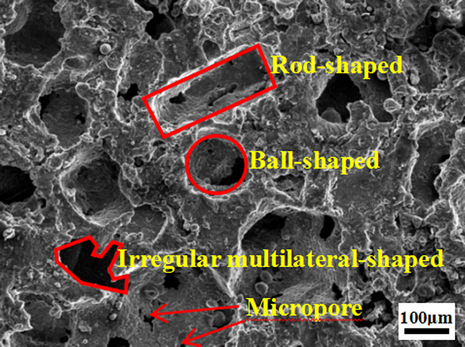Published online by Cambridge University Press: 23 June 2020

In this paper, CNTs reinforced foam aluminum matrix composites with small pore diameter were prepared by powder metallurgy method. When the mass fraction of CNTs was 0.75%, the tensile strength, flexural strength and compressive yield strength of the materials were 3.4 times, 2.4 times and 2.4 times of pure foam aluminum, respectively, reaching the maximum value, which obviously improved the mechanical properties of aluminum foam. The tensile property model of foam aluminum matrix composites was built to predict the properties of the composites, and the effects of defects and reinforcement on the mechanical properties of the composites were compared. The results show that the tensile fitting is consistent with the measured results when the mass fraction of CNTs is less than 0.75%, but the weakening effect of defects on the strength of aluminum foam is much greater than the enhancement of CNTs. With the increase of CNTs mass fraction, the damping loss factor of foam aluminum composites increases, dislocation damping and grain boundary damping play a role in advance, and the damping peak moves to the low temperature region.
These authors contributed equal